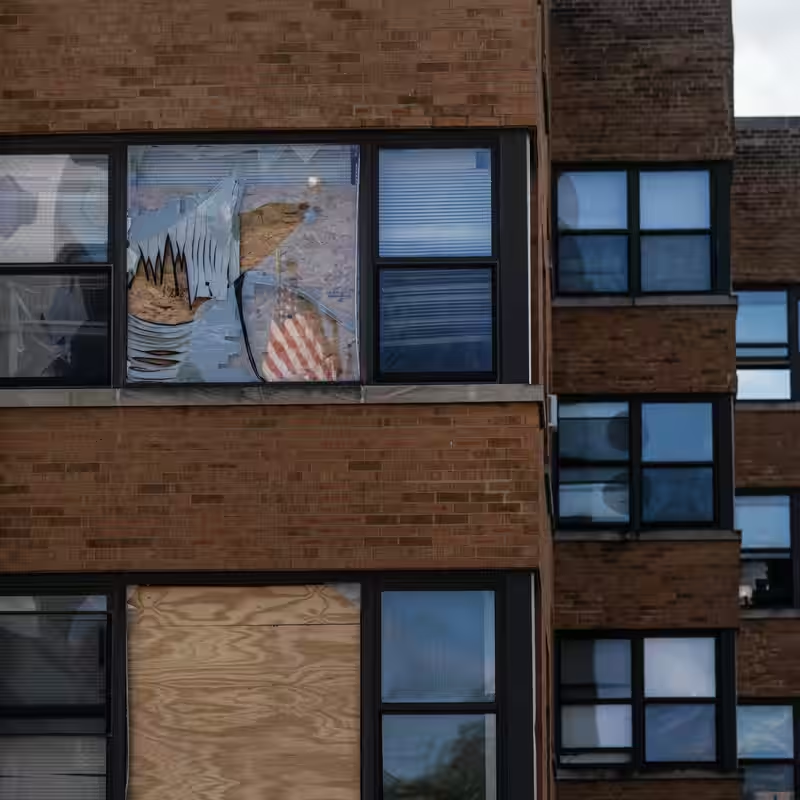Table of Contents
- What Happened in South Shore?
- A Building in Crisis
- U.S. Citizens Swept Up in Chaos
- Federal Justification vs. Local Backlash
- What Comes Next?
- Sources
Chicago Immigration Raid Sparks Outrage After U.S. Citizens Detained
In the early hours of September 30, 2025, a quiet night in Chicago’s South Shore neighborhood shattered into chaos. Hundreds of federal agents—some rappelling from a Black Hawk helicopter—stormed a five-story apartment building at 7500 S. South Shore Drive. What followed was one of the most aggressive immigration raids in recent U.S. history—and a deeply controversial operation that swept up dozens of American citizens along with undocumented Venezuelans.
Residents described scenes of terror: doors kicked in, flash-bang grenades tossed into bedrooms, families yanked from their beds and zip-tied in hallways. “They didn’t treat people like they were American,” said Cameo Polk, a lifelong Chicagoan who watched federal agents arrest his brother despite both being U.S. citizens.
A Building in Crisis
The target wasn’t chosen at random. For years, the red-brick building had been a hotbed of neglect, crime, and squalor. Mold-covered walls, broken elevators, urine-stained stairwells, and squatters in vacant units made daily life a struggle for tenants—many of them elderly, working-class Black residents.
City records show nearly 500 emergency calls from the building in 2025 alone. A fatal execution-style murder of a Venezuelan man in June further escalated tensions. By September, the city and Wells Fargo (which held the mortgage) were pressuring the owner, Trinity Flood, to make urgent repairs or face receivership.
Despite claims of spending $2 million on security and maintenance since 2020, conditions remained dire. “Drugs, gangs, prostitution—anything illegal? Name it. It happened there,” said former resident Twana Pickens.
U.S. Citizens Swept Up in Chaos
While the raid aimed to apprehend suspected members of the Venezuelan gang Tren de Aragua, federal agents detained at least two dozen U.S. citizens—including children and seniors—without warning.
Keisha Clark, 43, recalled being thrown to the floor, wrists bound, and marched outside in her pajamas. “Clearly you can see that we’re American,” she said. “Why are we in handcuffs?”
Eboni Watson, a neighbor, witnessed a federal agent forcibly separate a baby from its mother. Others described being held on buses for over an hour while agents ran background checks.
Although most citizens were eventually released, the psychological toll remains. “I still jump at loud noises,” said Roderick Johnson, 67, who was awakened by a flash-bang grenade.
Federal Justification vs. Local Backlash
Border Patrol officials defended the raid, citing intelligence that gang members were squatting in the building and extorting residents. “They carried weapons and moved freely through the complex,” said Assistant Chief Patrol Agent David Kim.
But Chicago Mayor Brandon Johnson condemned the operation as “a show of authoritarianism, a forceful display of tyranny.” Civil rights groups and legal aid organizations have since filed complaints, demanding transparency about who was arrested and where they’re being held.
Notably, three individuals identified by The New York Times as detained in the raid had no criminal records—raising questions about the accuracy of federal intelligence.
What Comes Next?
Legal advocates are pushing for investigations into potential civil rights violations. Meanwhile, residents fear the building may be shuttered or sold, leaving them homeless.
“The way it looks, they’re trying to close the building down,” said Johnson, echoing a growing anxiety among tenants.
As federal immigration enforcement intensifies in urban centers, the South Shore raid stands as a stark reminder: in the pursuit of one policy goal, the rights of many can be trampled in the dark.




